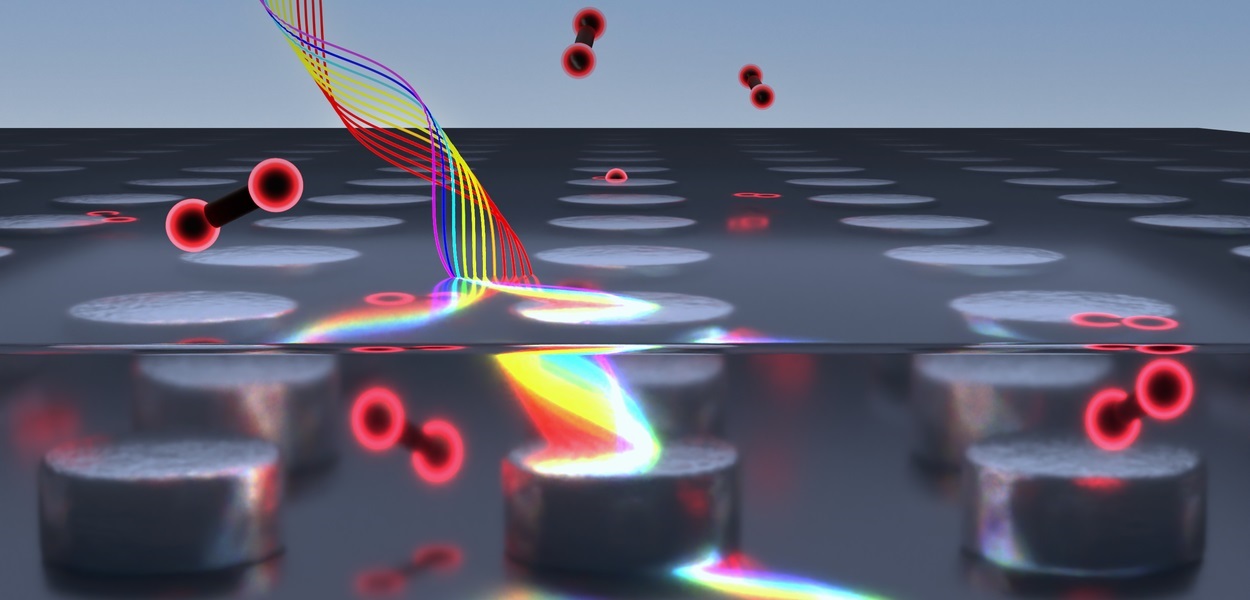14 October 2022
A group of physicists from VU Amsterdam, TU Eindhoven and Chalmers University of Technology from Sweden, led by VU physicist Andrea Baldi, successfully developed a new, highly sensitive optical hydrogen sensor.
Their research is published in Nature Communications. The researchers successfully developed an optical hydrogen sensor that can detect hydrogen gas at parts-per-billion (ppb) concentrations for the first time.
First author Ferry Nugroho from VU Amsterdam: “This is important, because hydrogen sensors are used in many applications, from chemical industries, diagnostics, food, and in the increasing field of safety due to the emergence of hydrogen-powered vehicles. For the latter, safety is a main issue since hydrogen is flammable at certain concentration. To this day, electrical sensors are the most common thanks to their high sensitivity (they can reach ppb concentrations) but they involve the use of electrical currents that may induce sparks. On the contrary, optical sensors are inherently safe as they don’t need any electrical component close to the measurement area. Moreover, optical hydrogen sensors have developed rapidly and have now equal, if not higher, performance in terms of speed and miniaturization, than electrical ones. Despite these advantages, optical hydrogen detectors are still lacking in one aspect, that is sensitivity.”
Nanoparticles
Until now, no optical hydrogen sensor had detection limit in the ppb range. This situation is typically due to the active materials used, usually composed of palladium (Pd) or palladium alloys. When used as a plasmonic hydrogen sensors, palladium produces broad optical spectra, which then gives rise to a signal with high noise, and thus limited resolution to detect low concentration.
In this new paper, the researchers tackle this fundamental problem by designing a sample comprising of periodic arrays of Pd nanoparticles that support so-called surface lattice resonances, optical resonances with very narrow spectra and therefore very high sensitivity.
Inverse design
To find the array with the highest sensitivity, the researchers used an artificial intelligence approach called particle swarm optimization. This algorithm allows to optimize the structure of the nanoparticle array in such a way as to obtain the strongest optical response under exposure to hydrogen. Guided by the AI results, they fabricated the array and demonstrated the first optical sensor to detect hydrogen in the ppb range (250 ppb), which is at least 8 times more sensitive than the state-of-the-art.
The method has general applicability and can be combined with other optimization strategies aimed at improving other sensor’s performance indicators, such as detection speed (using other materials and alloys) and selectivity (with an optimal polymer layer acting as the coating).
Image: Ananta Rizki Fareza













